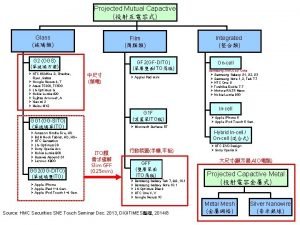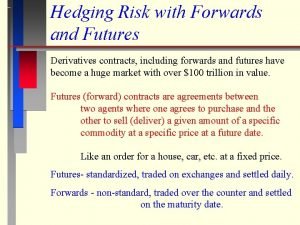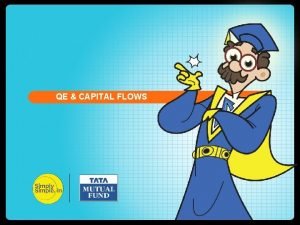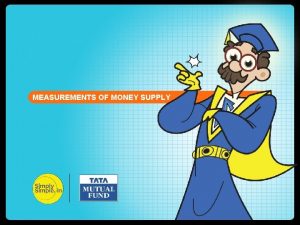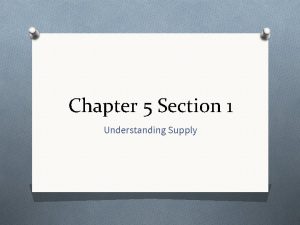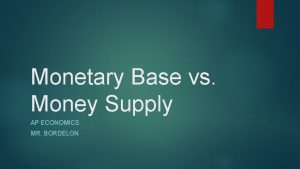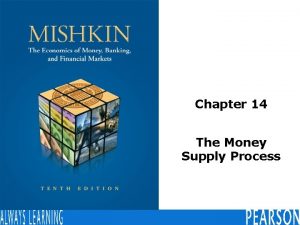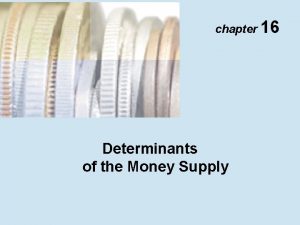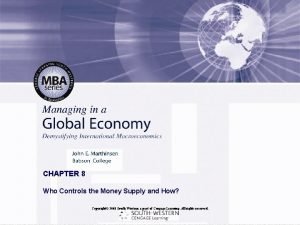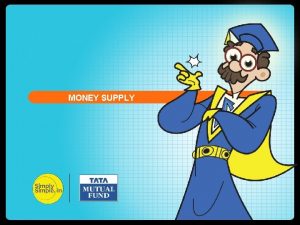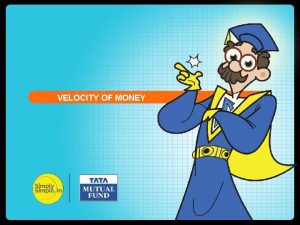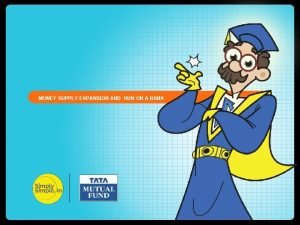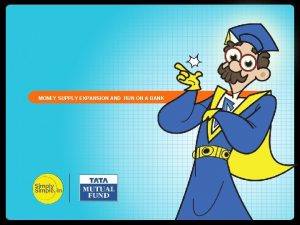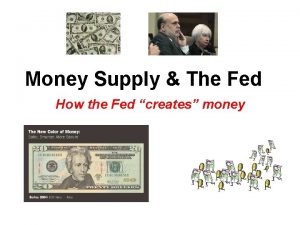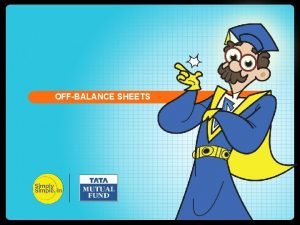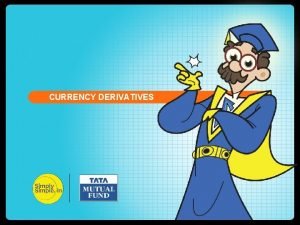FED OF TAPERING MEASUREMENTS MONEY SUPPLY Understanding the

















- Slides: 17

FED OF TAPERING MEASUREMENTS MONEY SUPPLY

Understanding the Measurements of Money Supply – By Prof. Simply Simple

MEASUREMENTS OF MONEY SUPPLY q We had earlier covered ‘Velocity of money’ – which is a term used to denote the number of times a unit of money in an economy changes hands during a certain period, say, one year. q Here, by money, economists generally mean currency and coins in circulation and bank reserves with the central bank.

MEASUREMENTS OF MONEY SUPPLY The life of money looks so simple when it is just moving from one hand to another. But what about the actual economy, where countless number of people are using different units of money for small and big transactions? How do we actually calculate the velocity of money in a real economy?

MEASUREMENTS OF MONEY SUPPLY q First of all, the velocity of money can be known only after all buy and sell transactions are over. q There is no way we can directly know about the velocity of money on a real-time basis. q We calculate velocity of money by dividing the value of the Gross Domestic Product, or GDP, which represents the total value of all goods and services produced by an economy, by the value of money supply. q Mathematically, it can be expressed as: Velocity of Money = GDP / Value of Money Supply

MEASUREMENTS OF MONEY SUPPLY Remember… q Different measurements of money supply would show different velocity. q But if you are not too comfortable with the nuances of money supply, then you can just think of money as the value of the total stock of currency notes and coins available in an economy.

MEASUREMENTS OF MONEY SUPPLY Now… q The different types of money are typically classified as M’s. q In the money supply statistics, central bank money (in our case RBI) is M 0 while commercial bank money (other national banks) is divided up into M 1 -M 3 components.

MEASUREMENTS OF MONEY SUPPLY q M 0: currency (notes and coins) in circulation and in bank vaults. M 0 is usually called the monetary base - the base from which other forms of money are created - and is traditionally the most liquid measure of the money supply q M 1: currency in circulation + demand deposits + traveler's cheques. M 1 represents the assets that can be used to pay for a good or service or to repay debt. q M 2: The sum of M 1 + savings deposits, small denomination deposits & retirement accounts. q M 3: The sum of M 2 + large deposits, Euro-dollar deposits & dollars held in foreign offices of banks.

MEASUREMENTS OF MONEY SUPPLY But how does one calculate the different measurements of money supply such as M 0, M 1, M 2, M 3 and so on?

MEASUREMENTS OF MONEY SUPPLY Here’s how… q You can choose any of the different measurements of money supply such as M 0, M 1, M 2, M 3 and so on. q But since different measurements of money supply would show different values, you would get different velocities of money. q So if the value of GDP is, say, Rs 10 lakh and the value of the base money or M 0 is, say, Rs 1 lakh, then the velocity of money would be 10. Likewise, if the value of M 3 is, say, Rs 2 lakh, then the velocity of money would be five.

MEASUREMENTS OF MONEY SUPPLY But you may ask, which one is the true velocity of money, 10 or five? q It is both. q In the present example, 10 is the velocity of money in its most liquid form—the currency and coins actually in circulation. q As we move up the ladder of M 1, M 2, and M 3, the liquidity of money decreases and so does its velocity.

MEASUREMENTS OF MONEY SUPPLY Which brings me to my original point… q From one wallet to another, from one shopper to the next, that is the life of money. q But we often forget that money is like a lubricant that makes the economy move smoothly. q Therefore, if the money is parked in our pocket, and we don’t spend it, in effect the economy slows down. q Thus money needs to move and therefore needs velocity (velocity is another word for speed) as shown in the next slide…

MEASUREMENTS OF MONEY SUPPLY How Money Moves! Baker buys clothes from the cloth merchant Barber buys bread from the baker Rs. 100 Cloth merchant gets a haircut from the barber

MEASUREMENTS OF MONEY SUPPLY To Sum Up q What: ‘Velocity of money’ is a term used to denote the number of times a unit of money in an economy changes hands during a certain period. q How: Velocity of money is calculated by dividing the value of GDP with the value of money in circulation. q Why: Money needs to move or have velocity for the economy to move ahead smoothly.

MEASUREMENTS OF MONEY SUPPLY Hope you have now understood the concept of Measurements of Money Supply

Do write to me at professor@tataamc. com

DISCLAIMER The views expressed in this lesson are for information purposes only and do not construe to be any investment, legal or taxation advice. The lesson is a conceptual representation and may not include several nuances that are associated and vital. The purpose of this lesson is to clarify the basics of the concept so that readers at large can relate and thereby take more interest in the product / concept. In a nutshell, Professor Simply Simple lessons should be seen from the perspective of it being a primer on financial concepts. The contents are topical in nature and held true at the time of creation of the lesson. This is not indicative of future market trends, nor is Tata Asset Management Ltd. attempting to predict the same. Reprinting any part of this material will be at your own risk. Tata Asset Management Ltd. will not be liable for the consequences of such action. Mutual Fund investments are subject to market risks, read all scheme related documents carefully.
 Tapering fed
Tapering fed Forward contract hedging
Forward contract hedging Dana damian
Dana damian Tapering qe
Tapering qe Spiral angle of bur
Spiral angle of bur Tpn cycling
Tpn cycling Measurements of money
Measurements of money Money smart money match
Money smart money match Money on money multiple
Money on money multiple Context of the great gatsby
Context of the great gatsby Gatsby physical description
Gatsby physical description Tom buchanan character traits
Tom buchanan character traits Chapter 5 section 1 understanding supply
Chapter 5 section 1 understanding supply Monetray base
Monetray base Money multiplier formula
Money multiplier formula Three players in the money supply process
Three players in the money supply process Chapter 16 determinants of the money supply
Chapter 16 determinants of the money supply Who controls money
Who controls money
